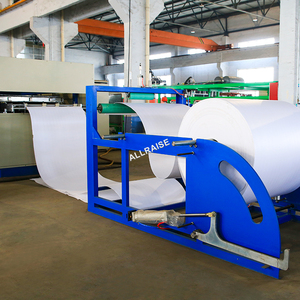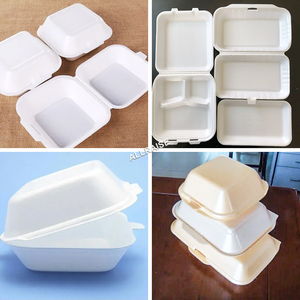
All categories
Featured selections
Trade Assurance
Buyer Central
Help Center
Get the app
Become a supplier

(3500 products available)






































Made of polystyrene, styrene, or polyurethane, the disposable foam plates are lightweight, affordable, and have an insulating property. They are generally used for serving food and beverages in parties and other events. Based on their structure and composition, these plates can be classified into the following types:
Based on Composition:
Polyethylene Foam Plates:
These plates have a closed-cell structure and are made of low-density polyethylene. They are sturdy, lightweight, and waterproof. As a result, they are ideal for serving wet and dry food items. Moreover, their shock-absorbing property makes them suitable for delivery services.
EPE (Expanded Polyethylene) Plates:
These disposable plates are made from a soft, flexible material with an excellent cushioning effect. Being tear-resistant and lightweight, they are perfect for outdoor events.
PS (Polystyrene) Foam Plates:
Made of styrene, these plates can be divided into two categories:
Thermoformed PS Foam Plates:
Manufactured using the thermoforming process, these plates are made from a single layer of foamed polystyrene material. They are available in various sizes and shapes and are typically used in fast-food restaurants.
Injection Molded PS Foam Plates:
These plates are made using injected molded foamed polystyrene material. Being thicker and sturdier, they are best for catered events where multiple courses are served.
Based on their Structure:
Single-layered Foam Plates:
These plates are made from a single layer of foam material. Lightweight and affordable, they are ideal for serving dry food items.
Multi-layered Foam Plates:
Manufactured with multiple layers of foam material, these plates are thicker and sturdier. As a result, they are best for serving heavy meals and for outdoor events.
Disposable foam plates are engineered with multiple design elements to improve convenience and usability.
Materials and Construction:
Disposable foam plates are usually made out of polystyrene, which is a thermoplastic polymer. Polystyrene is lightweight, but it has a high shock resistance and its flexible. The material can be used in many different forms, including rigid or foamy substances. When foamed, polystyrene provides great insulation and protects from vibrations. This is why food-grade disposable foam plates have been constructed with it. However, the material cannot be recycled. To make the plates reusable, manufacturers bond the top and bottom layers of foam together through heat sealing. This results in a strong, waterproof seal that won't break easily, even if hot or liquid food is placed on it.
Shape and Size:
Disposable foam plates come in numerous different forms and sizes to satisfy diverse culinary needs. The standard round shape is frequently seen for serving entrees, salads, and desserts. However, square and rectangular plates provide for greater presentation and can effortlessly accommodate for courses or buffet-style meals. Furthermore, to meet for different serving requirements, foam plates can vary in size from small (6 inches in diameter) to large (over 10 inches). This variety allows caterers, restaurants, and event organizers to select the proper plate that fits their specific serving requirements.
Compartmentalized Plates:
Compartmentalized foam plates are created for serving multiple dishes without mixing flavors. These plates consist of distinct sections, each with its own compartment. This design is quite popular in school cafeterias, fast-food restaurants, and outdoor events where people want to keep their plates clean and organize their food. Moreover, it helps in portion control, as one can easily see and manage how much food is being served.
Textured and Rimmed Plates:
Some disposable foam plates come with textured surfaces or raised rims for added convenience. Textured surfaces prevent food from slipping off the plate, thereby improving grip and reducing the chances of spills. On the other hand, rimmed plates help contain liquids and prevent them from spilling over the edges. This is especially useful when serving soups, stews, or dishes with sauces.
Disposable foam plates are used in many industries and businesses. They make serving simple and affordable.
Food Truck and Street Food Vendors.
Food trucks and street food vendors serve food fast on the streets or in events. They use disposable foam plates because they are easy to use and throw away. These plates work well for many types of food, from burgers to ethnic dishes. They help vendors serve customers quickly, which is important in a busy setting.
Catering Services.
Catering services provide food for events like weddings, parties, and business meetings. They use disposable foam plates to make cleanup easy. Foam plates are great for large events where washing dishes is hard. They let guests enjoy their food without worrying about dirty dishes.
Picnic and Outdoor Events.
People often choose disposable foam plates for outdoor events such as picnics, barbecues, and birthday parties. They are lightweight and tough, making them good for outdoor use. No one wants to wash dishes in the great outdoors. Foam plates make sure that eating outside is simple and enjoyable.
Healthcare Facilities.
Hospitals and nursing homes use disposable foam plates to stop the spread of germs. These clean and throw-away plates are important in places where keeping things clean is very important. Using disposable plates makes it simpler to stop the spread of sickness, which is very important in healthcare settings.
Convenience Stores and Gas Stations.
Convenience stores and gas stations sell ready-to-eat foods. They use disposable foam plates because customers want fast and easy meals. These plates work well for foods like sandwiches, salads, and snacks. They let customers eat without the need for plates at the gas station or store.
School Lunch Programs.
Schools use disposable foam plates for lunch programs. Many students eat lunch each day, so schools need ways to serve food quickly. Foam plates are cheap and help students eat fast. This is important in schools where meals must be served within a short time frame.
Event and Party Rentals.
Companies that rent items for events use disposable foam plates. When people rent plates too, foam ones are chosen for easy cleaning. This is common for weddings or large parties where washing many dishes would take a lot of time.
When choosing disposable foam plates for business use, consider the following factors:
Material Safety:
Choose plates made from materials that are safe for food contact. Look for products that comply with relevant food safety standards. Avoid plates with harmful chemicals that could leach into foods.
Plate Performance:
Consider how well plates perform for intended use. Evaluate factors like load capacity, cut resistance, and leak resistance. Choose plates that stay intact and prevent spills in serving environments.
Sustainability:
Consider the environmental impact of disposable plates. Choose plates made from recycled materials or those that have biodegradable options. Look for products that minimize plastic waste and promote sustainability.
Cost:
Evaluate the cost of disposable foam plates. Consider the price per plate and any bulk purchase discounts. Choose plates that offer a good balance of quality and cost for business use.
Regulatory Compliance:
Ensure that the disposable foam plates comply with local health and safety regulations. Stay informed about any industry standards that apply to foodservice packaging. Choose products from suppliers who prioritize regulatory compliance.
Supplier Reputation:
Choose suppliers with a good reputation in the industry. Select suppliers who have quality assurance processes for their products. Consider suppliers who provide reliable customer support and timely delivery.
Q1: Can disposable foam plates be used in microwaves and ovens?
A1: Yes, most disposable foam dishes are microwave-safe and can be used in microwaves. However, they should not be used in conventional ovens or toaster ovens, as these appliances can generate heat levels that exceed the product's capabilities, potentially causing melting or deformation.
Q2: What is the cost of disposable foam plates?
A2: Disposable foam plates are cost-effective compared to other types of disposable tableware. Prices may vary based on factors like product specifications, supplier, and order volume. It is suggested to purchase them in bulk to obtain better prices and save costs.
Q3: Are disposable foam plates biodegradable?
A3: Disposable foam plates are usually made from polystyrene, a non-biodegradable material. This means they will not break down naturally in the environment. Many manufacturers are working on creating disposable foam plates that can be biodegraded or recycled to reduce environmental impact.
Q4: How should disposable foam plates be disposed of?
A4: The disposal method for disposable foam plates may vary depending on local regulations. Generally, they should be disposed of as non-biodegradable solid waste. To reduce environmental impact, it is advised to promote recycling and use eco-friendly products.